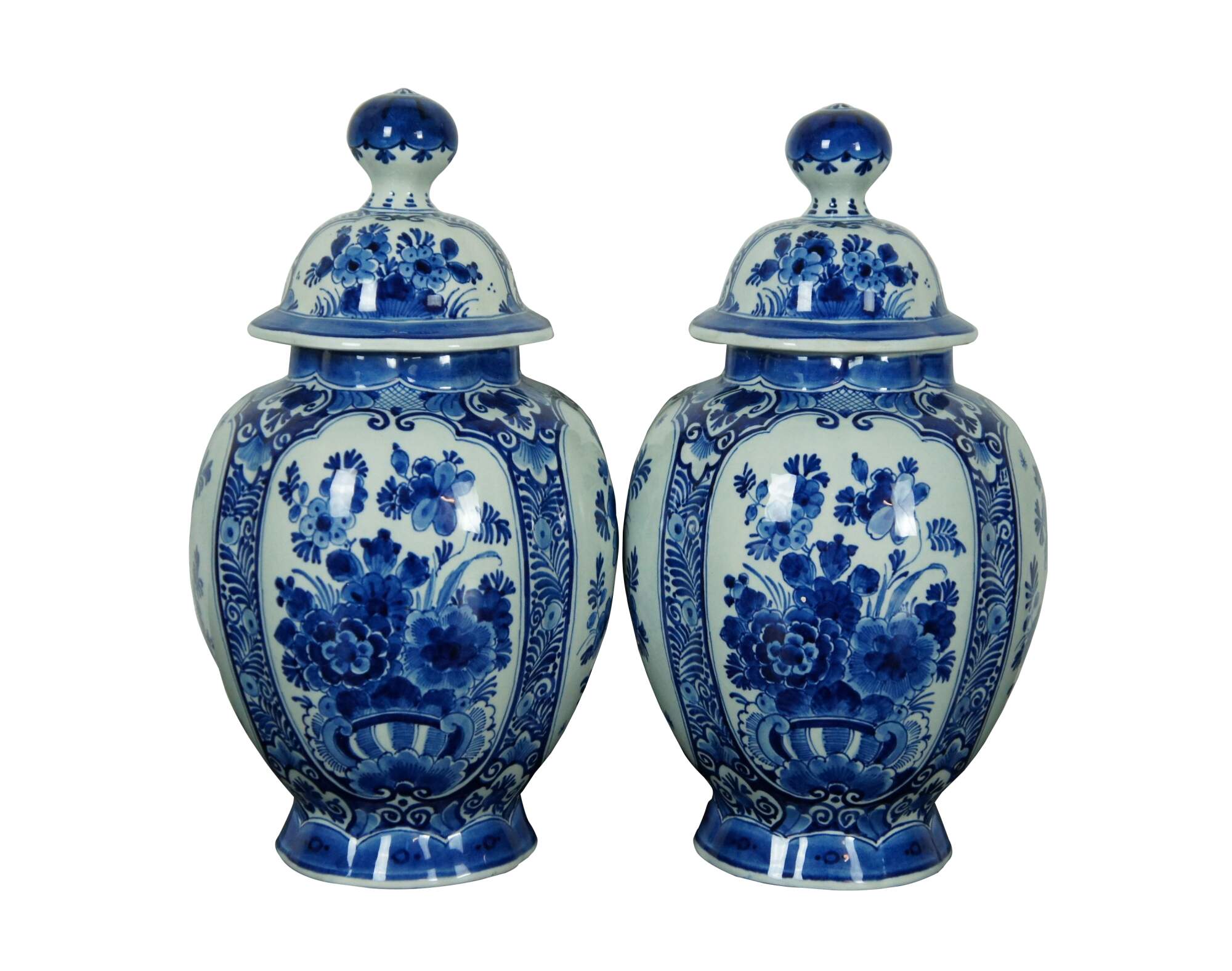
Shipping:
Free Shipping Included
Delivery:
Estimated 2-15 Business Days
Payments:
Credit Card, Check, Cash, PayPal, Apple Pay, Venmo
Returns:
30 Days 100% Money Back Guarantee, Buyer Pays Return Shipping
Description
Pair of antique Royal Delft pottery blue and white porcelain mantel urns. Traditional temple urn / lobed pumpkin-like shape, scalloped rim and large round finials on lids. Hand decorated with various floral motifs in blue. Date Code: AR (1922). Artists initials.
During the Dutch Golden Age, the Dutch East India Company had a lively trade with the East and imported millions of pieces of Chinese porcelain in the early 17th century. Exotic blue-and-white designs from China were particularly prized by Dutch and European elites. The decline of the Ming dynasty following the death of the Wanli Emperor negatively impacted Sino-Dutch trade to the extent that Dutch merchants decided the only solution was to produce such objects locally. David Anthonisz van der Pieth, founded De Porceleyne Fles ("the Porcelain Bottle") in 1653. From then until the late 18th century, the company produced earthenware for clients around the Netherlands and Europe. Delftware ranged from simple household items – plain white earthenware with little or no decoration – to fancy artwork, illustrated with religious motifs, native Dutch scenes with windmills and fishing boats, hunting scenes, landscapes and seascapes. Competition from the European porcelain industry, however, was fierce and by 1840, De Porceleyne Fles was the last factory remaining, all other competitors having ceased operations. In 1876, Joost Thooft bought the factory with the aim to revive the production of Delftware. Together with Leo Senf, he worked to modernise operations and produce products that would be able to compete with European manufacturers. Thooft developed the trademark that is applied to all hand-painted Royal Delft items. After Thooft's death in 1890, owner Abel Labouchere helmed the company, overseeing the centralisation of production from dispersed locations around the city to the current factory location in 1916. In 1919, the Dutch royal house awarded the company the right to add the prefix Koninklijke (Royal) to its name, a sign of appreciation for the company's efforts to preserve an important Dutch industry. To this day, the company maintains a close relation with the Dutch royal family.
Condition
Good Overall - Gentle wear
Dimensions
6.5" x 11.75" (Diameter x Height)
You May Also Like